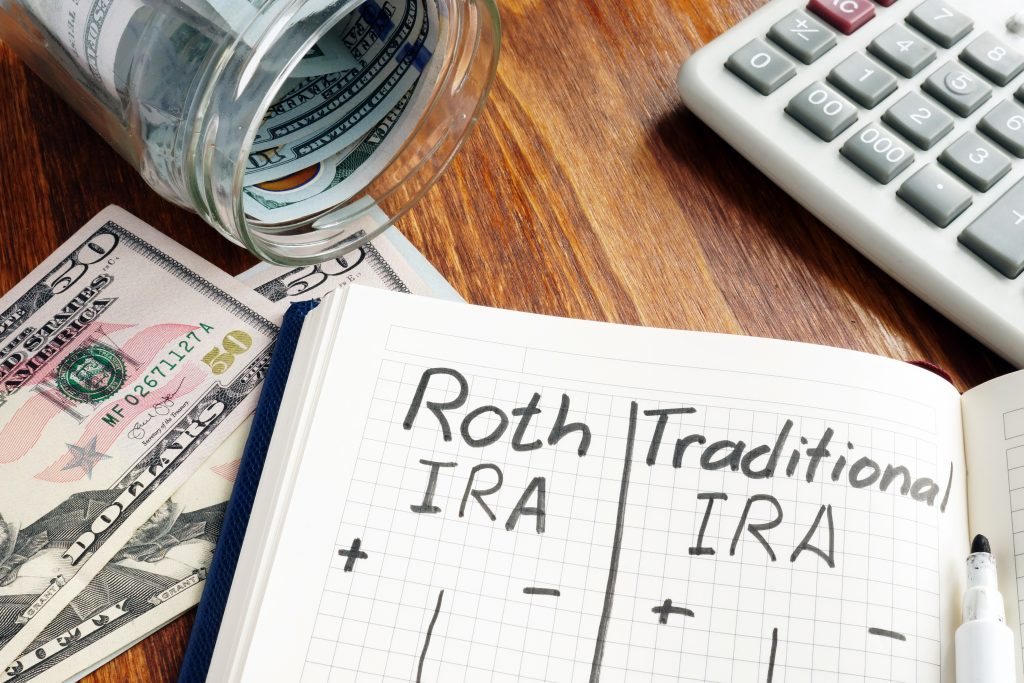Last December, the imaginatively named Setting Every Community Up for Retirement Enhancement Act (SECURE Act) became law.
The SECURE Act was intended mainly to expand opportunities for individuals to increase their retirement savings and to simplify the administration of retirement plans. Fine. Good.
But the act also included a big unfavorable change that kneecapped the so-called stretch IRA estate planning strategy that was employed by well-off IRA owners.
Before covering this unfavorable development and what you can do in response, let’s first review some background information and how the stretch IRA strategy worked before the damage done by the SECURE Act. Here goes.
Effective date. The SECURE Act’s anti–stretch IRA change is generally effective for IRAs inherited by non-spousal beneficiaries from account owners who die after 2019. An IRA that was inherited from an original account owner(the person for whom the account was first established) who died in 2019 or earlier is unaffected and can still work as a stretch IRA, the same as before the SECURE Act.
The IRA Landscape
You may have big bucks in one or more traditional IRAs. Large traditional IRA balances are most often a result of rolling over money previously held in employer-sponsored retirement plans.
You may have built up substantial traditional IRA balances by making annual contributions over the years and successfully investing those dollars. You may have substantial balances in one or more Roth IRAs, from converting traditional IRAs into Roth accounts. Or you may have rolled over distributions from qualified retirement plans into one or more Roth IRAs.
The Stretch IRA Strategy
The stretch IRA strategy involves keeping as much money as possible in your traditional IRA or Roth IRA while you’re still alive and then leaving the account to your spouse or a younger beneficiary, who keeps the inherited account rolling for as long as possible and keeps collecting the tax benefits. Thus, the term “stretch IRA.”
Stretch IRA Basics Before the SECURE Act
After a traditional IRA owner reaches age 70 1/2, or age 72 if you had not reached age 70 1/2 as of December 31,2019, the federal income tax rules compel you to begin taking annual required minimum distributions (RMDs) and paying the resulting extra income tax hit.
If you fail to take your RMD, you’ll owe a 50 percent penalty on the shortfall: the difference between the RMD amount and distributions taken during the year, if any. That’s the bad news.
The good news is, you are required to take out only the specified minimum amount each year from your traditional IRA(s). The rest of the balance(s) can be left to accumulate earnings on a tax-deferred basis.
Even better, as the original owner of a Roth IRA, you need not take any RMDs from the account for as long as you live.
If you with draw only the RMD amount from your traditional IRA each year and nothing from your Roth IRA, the account’s tax advantages can be stretched out. When you depart this cruel orb, your IRA can be left to your surviving spouse or a younger beneficiary, who keeps the inherited account rolling for as long as possible under the special RMD rules that apply to inherited IRAs.
Before the SECURE Act, the traditional IRA or Roth IRA beneficiary could generally take out annual RMDs that were calculated by dividing the inherited account balance as of the end of the previous year by a single life-expectancy figure based on the beneficiary’s age.
As it turned out, the annual RMD amount was often a very small percentage of the inherited IRA’s balance. By following a policy of withdrawing only the RMD amount for each year while keeping the remaining account balance fully invested, a beneficiary could keep an inherited IRA alive and growing for many years.
Before the SECURE Act, the beneficiary could then leave the inherited IRA to another beneficiary the next generation down (for example, to a child who is the grandchild of the original IRA owner). That next-generation beneficiary could continue following the stretch IRA strategy by withdrawing only the annual RMD amount each year.
The same pre–SECURE Act stretch IRA strategy could also be used for beneficiaries of inherited Roth IRAs.
The SECURE Act Imposes a New 10-Year Account Liquidation Rule That Seriously Injures the Stretch IRA Strategy
Unfortunately for the estate plans of well-off IRA owners and the tax situations of some of their IRA beneficiaries, the SECURE Act requires most non-spouse beneficiaries to drain inherited IRAs within 10 years after the account owner’s death.
As we just explained, the pre–SECURE Act RMD rules allowed a non-spouse IRA beneficiary to gradually drain the substantial traditional or Roth IRA inherited from good ole Grandpa Frank over the beneficiary’s IRS-defined life expectancy. That deal is off the table if Grandpa Frank dies in 2020 or later.
Who Is Affected by the SECURE Act Change?
The SECURE Act’s anti-taxpayer 10-year account liquidation rule doesn’t affect RMDs taken by original traditional IRA owners. They still operate under the same RMD rules as before.
As under pre–SECURE Act law, original owners of Roth IRAs need not take any RMDs for as long as they live. They are unaffected.
Beneficiaries who want to quickly drain their inherited IRAs are unaffected.
Bottom line. The 10-year account liquidation rule affects only certain non-spouse beneficiaries who would otherwise keep inherited accounts open for as long as possible to reap the tax advantages.
Exception for Eligible Designated Beneficiaries
The SECURE Act’s 10-year account liquidation rule does not immediately affect accounts inherited by a so-called eligible designated beneficiary.
An eligible designated beneficiary is
- the surviving spouse of the deceased account owner,
- a minor child of the deceased account owner,
- a beneficiary who is no more than 10 years younger than the deceased account owner, or
- a disabled or chronically ill individual.
Under the exception for eligible designated beneficiaries, RMDs generally can be taken from the inherited account over the life expectancy of the eligible designated beneficiary, beginning with the year following the year of the account owner’s death.
Other non-spouse beneficiaries, whom we will call affected beneficiaries, will be slammed by the 10-year account liquidation rule.
Following the death of an eligible designated beneficiary, the account balance must be distributed within 10 years.
The account balance must be distributed within 10 years after a child of the account owner reaches the age of majority under local law.
10-Year Account Liquidation Rule Specifics
When applicable, the 10-year account liquidation rule generally applies regardless of whether you, as the original account owner, die before or after your RMD required date. Thanks to another SECURE Act change, the RMD rules do not kick in until age 72 if you attain age 70 1/2 after 2019. If you are in that age category, your required beginning date is April 1 of the year following the year during which you attain age 72.
And then, again thanks to the other SECURE Act change, an affected beneficiary must drain the account inherited from you by the end of the 10th calendar year following the year of your demise. Until that deadline is reached, your beneficiary can leave the account untouched.
Failure to comply with the 10-year account liquidation rule will expose the affected beneficiary to a penalty equal to50 percent of the account balance that remains after the 10-year deadline has passed.
Reminder. As stated earlier, the SECURE Act’s 10-year account liquidation rule applies only to affected beneficiaries who inherit IRAs from original account owners who die after 2019. An IRA inherited by a non-spousal beneficiary from an original account owner who died in 2019 or earlier is unaffected, so the inherited account can still work as a stretch IRA, the same as before the SECURE Act.
10-Year Account Liquidation Rule in Action—Clarifying Examples
The following examples illustrate how the post–SECURE Act RMD rules work in a few commonly encountered situations.
Example 1.
Bruno dies in 2020 and leaves his $500,000 traditional IRA to designated beneficiary Claus, his younger brother, who was born nine years after Bruno. Claus is an eligible designated beneficiary (no more than 10years younger). Therefore, the balance in the inherited IRA can be paid out over his life expectancy. If Claus dies before the account is exhausted, the remaining balance must be paid out within 10 years after his death.
Example 2.
Diane dies in 2020 and leaves her $400,000 Roth IRA to designated beneficiary Ernesto, her younger brother, who was born 15 years after Diane. Ernesto is not an eligible designated beneficiary because he is more than 10 years younger than Diane. The balance in the inherited Roth account must be paid out within 10 years after Diane’s death. This is not as favorable a result as could have been achieved before the SECURE Act, but it’s certainly not a disaster.
Example 3.
Freeman died on December 15, 2019. He left his $300,000 traditional IRA to designated beneficiary Gloria, his beloved niece, who is 25 years younger than Freeman. Because Freeman died before 2020, the balance in the inherited IRA can be paid out over Gloria’s life expectancy under the pre–SECURE-Act RMD rules. If Gloria dies in 2020 or a later year, the balance in the inherited IRA must be paid out to her estate or designated beneficiary within 10 years after her death.
Example 4.
Heather dies in 2020 at age 85. She leaves her $2 million Roth IRA to her 25-year-old husband, Ignacio. As a surviving spouse, he can retitle the inherited Roth account in his own name. Then he will not have to take any RMDs for as long as he lives. So this is a situation where the stretch IRA strategy still works just great. But it’s an unusual situation.
Warning for Stretch IRAs Held in “Conduit” or “Pass-Through” Trusts
If you’ve set up a conduit or pass-through trust as the beneficiary of what was intended to be a stretch IRA for anon-spouse heir (like a child or grandkid), watch out!
The current trust language regarding permissible IRA distributions may not allow compliance with the SECURE Act’s 10-year account liquidation rule. Fixing this problem is a legal matter, and you should get with your estate planning attorney to address it.
Explore Alternatives to the Stretch IRA
Now we are finally ready to cover some tax-smart estate planning alternatives for well-off folks who would have loved to use the stretch IRA strategy but no longer can after the SECURE Act. Here goes.
Estate Planning: The Lay of the Land
For 2020, the unified federal gift and estate tax exemption is a whopping $11.58 million, or effectively $23.16 million for a married couple.
Under current law, cumulative lifetime gifts and estate values in excess of the exemption amount are taxed at a flat40 percent federal rate, which is a low rate by historical standards.
As long as the current federal gift and estate tax regime remains in place, relatively few individuals will be affected by federal gift and estate tax consequences. Therefore, it’s appropriate to look at strategies that can reduce income taxes, which affect almost everybody.
So, let’s focus on wealth-transfer strategies that:
- can reduce or postpone federal income taxes (and often state income taxes too, depending on the jurisdiction), and
- will generally do no harm under the current federal gift and estate tax regime.
Here goes.
Set Up a Roth IRA and Live with the 10-year Account Liquidation Rule
As explained earlier, the SECURE Act established a 10-year account liquidation rule for most non-spouse beneficiaries of IRAs inherited from account owners who die after 2019.
While this is definitely not a positive estate planning development, it’s not horrible news in the context of Roth IRAs. That’s because Roth IRAs left to non-spouse beneficiaries can still earn federal-income-tax-free income and gains for as long as you, the account owner, live and for at least 10 years thereafter. That can work out okay, as the example below illustrates.
Roth IRA Advantages
It is important to remember that the Roth IRA has two big advantages over the traditional IRA as a tax-favored wealth transfer vehicle.
Advantage No. 1. The first and biggest advantage is the fact that qualified distributions from a Roth IRA are completely free of any federal income tax under current law. As long as all Roth withdrawals are qualified distributions, you—as the account owner or as a beneficiary who inherits the account—will never owe the IRS a dime in federal income taxes on those withdrawals.
Qualified Roth distributions are those that are taken after you, as the original account owner,
- have reached age 59 1/2, died, or become disabled; and
- have had at least one Roth IRA established and open for over five years.
Key point. Withdrawals by a beneficiary from a Roth IRA inherited from you will be federal-income-tax-free qualified distributions if the preceding two requirements are met.
Say you leave a Roth IRA to a non-spouse beneficiary. He or she can continue accumulating tax-free earnings for at least 10 years and can then take a federal-income-tax-free qualified distribution to liquidate the account at the end of the 10-year period.
As explained earlier, the 10-year account liquidation rule does not apply to eligible designated beneficiaries, so the stretch IRA strategy still works for them, the same as before the SECURE Act.
Advantage No. 2. You, as an original Roth IRA owner, need not take any annual RMDs from the account, because the RMD rules are not applicable to your Roth IRA for as long as you live.
Spousal Roth IRA Beneficiaries Are Still in the Driver’s Seat
If you leave a Roth IRA to your surviving spouse as the sole account beneficiary, he or she can retitle the account and treat it as his or her own Roth IRA. Then, your spouse need not take any RMDs for as long as he or she lives. The unfavorable SECURE Act change does not affect surviving spouses who retitle inherited Roth IRAs in their own names.
Non-Spouse Roth IRA Beneficiaries Can Still Gain Big Tax-Saving Benefits
When a non-spouse beneficiary (such as your child or grandchild) inherits your Roth IRA, the beneficiary generally must liquidate the account within 10 years after your death.
While this rule is unfavorable compared with what was allowed before the SECURE Act, the fact is that many non-spouse beneficiaries will want to liquidate their inherited Roth balances within 10 years anyway. For them, the 10-year account liquidation rule is not a negative.
Fund Your Roth IRA by Converting Your Traditional IRA
Usually, the only way to quickly get a substantial amount of money into a Roth account is by converting an existing traditional IRA into a Roth IRA. Of course, you must pay a tax price for jump-starting a Roth IRA savings program. Even so, a conversion will often be worth the price. Here’s the deal.
A Roth conversion is treated as a taxable distribution from the converted traditional IRA. Specifically, you are deemed to receive a taxable cash payout from the traditional IRA, with the money going into your new Roth account. Therefore, the conversion triggers income taxes.
In most cases, however, this negative factor is outweighed by the following positive factors:
- You may be able to significantly reduce the income tax cost of converting a large traditional IRA (one worth, say, several hundred thousand dollars or more) by spreading the conversion process over several years. Current tax law allows this, and now is the best time to get started if you believe current tax rates are probably lower than future tax rates will be.
- The conversion can position you to use the new Roth IRA as a tax-smart wealth transfer vehicle, as the example below illustrates.
- By paying the conversion tax bill, you are effectively prepaying future federal income taxes for the Roth account beneficiary, so the beneficiary can reap federal-income-tax-free income and gains in the future, as illustrated by the following example.
Example 5 The Roth IRA Is Still a Great Tax-Smart Wealth Transfer Vehicle
Say that you are age 65 when you convert your traditional IRA into a Roth account and that you live 12 more years and never take any withdrawals.
Your wife is age 70 when you pass away. She inherits your Roth IRA as the designated account beneficiary. According to the current IRS life expectancy table, she can expect to live another 17 years. She treats the inherited Roth IRA as her own account, which means she need not take any RMDs during her lifetime. Assume she leaves the Roth IRA untouched.
At age 87, your wife passes away and leaves the Roth IRA to your daughter, who was designated as the new account beneficiary when your wife took over the account. Your daughter is 50 years old. She must liquidate the account within 10 years after your wife’s death, but your daughter is not required to take any withdrawals before that deadline.
Under current law, any withdrawals taken by your daughter will be federal-income-tax-free qualified distributions. Since your daughter is tax-savvy like her parents, she withdraws nothing until she hits the 10-year deadline.
In this example, following the Roth IRA strategy allowed your family to accumulate federal-income-tax-free earnings for 39 years: 12 years with you, 17 years with your wife, and 10 years with your daughter. Not bad!
Key point. In effect, you took advantage of the Roth IRA strategy to establish a federal-income-tax-free source of wealth for your daughter, a member of the next generation. Good job!
Consider Other Tax-Smart Wealth Transfer Strategies
Beyond the idea of using a Roth IRA as an intergenerational wealth transfer vehicle, here are other simple and easy wealth transfer strategies to ponder.
Make Generous Gifts to Fund Section 529 College Savings Accounts
You can make a lump-sum 2020 gift of up to $75,000 to fund a Section 529 college savings account set up for a child or grandchild (or any other college-bound individual) and claim a federal gift tax exclusion for the full amount. This is five years’ worth of the standard $15,000 exclusion for 2020 gifts.
Taking advantage of this favorable gift tax rule allows you to quickly fund a Section 529 college account without using any of your unified federal gift and estate tax exemption.
If you are married, your spouse can also use the favorable gift tax rule to make a separate 2020 gift of up to$75,000 to fund a Section 529 account for a child or grandchild (or anyone else) without any federal gift or estate tax consequences.
As you know, Section 529 accounts have a big income tax advantage, because account earnings are allowed to accumulate free of federal income tax. Withdrawals to cover qualified college costs are federal-income-tax-free, too. So the Section 529 account is another tax-smart intergenerational wealth transfer vehicle.
Pay College Tuition Expenses (Not Room and Board) or Medical Bills for Loved Ones
You can pay unlimited amounts for these purposes without any federal tax consequences—as long as you do this by making payments directly to the college or medical service provider. Ditto for your spouse, if you are married.
Make Outright Gifts to Loved Ones or Gifts in Trust
Under the annual federal gift tax exclusion privilege, you can give away up to $15,000 during each and every year to as many individuals as desired without any adverse federal tax effects. Over time, making these so-called annual exclusion gifts (gifts up to the applicable annual exclusion) can substantially reduce the value of your taxable estate, especially if you give away appreciating assets such as stocks, shares of equity mutual funds, or real estate ownership interests.
You can also make bigger gifts that exceed the $15,000 annual exclusion amount. No gift tax will be owed on these “excess gifts” until they surpass your lifetime gift tax exemption.
If you are worried about the financial wisdom of a gift recipient, you can set up a trust that protects the gift recipient from his or her bad impulses.
Buy a Home for a Loved One
If you buy a home for a loved one (subject to the preceding gift tax considerations), that person will eventually become eligible for the principal residence federal income tax gain exclusion of up to $250,000, or $500,000 for a married couple.
The principal residence gain exclusion is one of the most valuable personal tax breaks on the books.
Buy Life Insurance to Transfer Wealth Tax-Free
There is generally no federal income tax hit on life insurance death benefits. So beneficiaries of a policy that you buy on your own life are allowed to receive death benefit proceeds totally free of any federal income tax. Nice!
Takeaways
Unfortunately for the estate plans of some well-off IRA owners (like you) and for the tax situations of most of their on-spouse IRA beneficiaries (like your children or grandchildren), the SECURE Act requires inherited IRAs to be drained within 10 years after you pass away.
So, you may need to update your estate plan if it includes the now-damaged stretch IRA strategy.
In circumstances that are much more limited than before the SECURE Act, the stretch IRA strategy still works.(See examples 1, 3, and 4 above.)
Even with the 10-year account liquidation rule, you can still set up a “semi-stretch IRA” (to coin a new term) that will deliver valuable tax benefits for years. (See Example 5 above.)
Finally, you can consider some other tax-smart estate planning alternatives once you’ve gotten over the injury to the stretch IRA strategy.




